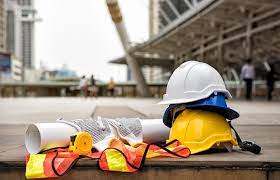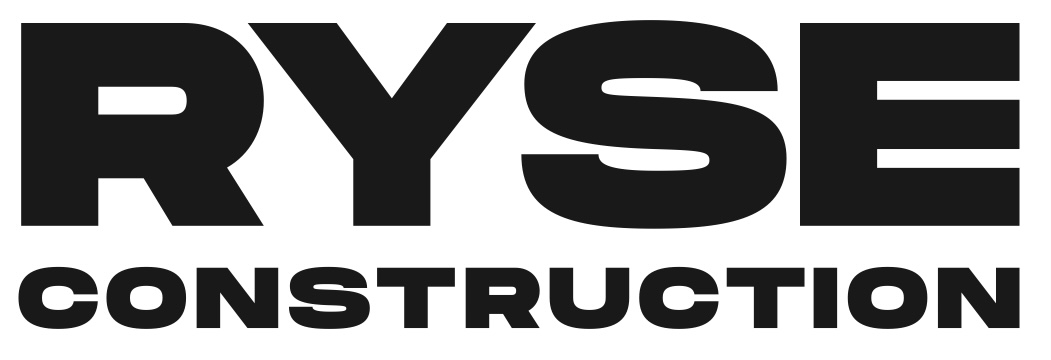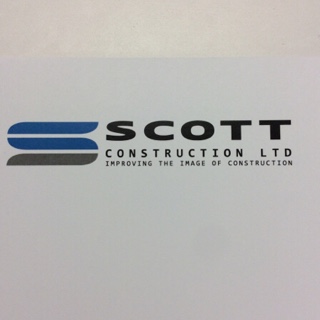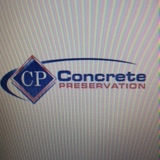Title Page
-
Site conducted
-
Conducted on
-
Prepared by
-
Location
Stability and Solidity
-
Are materials, equipment and, more generally, any component which, when moving in any way, may affect the health and safety of workers, stabilized in an appropriate and safe manner?
-
Is access allowed to surfaces with insufficiently resistant materials without the provision of appropriate safety equipment or other means?
-
Are high-level or low-level movable or fixed workstations solid and stable, taking into account the number of workers occupying them, the maximum loads they may have to bear and weight distribution, and outside influences?
-
Is the stability and solidity of structures checked appropriately, especially after any change in height or depth of workstation? NOTE: Certification from structural engineers, mechanical engineers, architects, etc.<br>
Energy Distribution Installations
-
Do the installations prevent fire or explosion hazards and ensure protection against the risk of electrocution for individuals through proper design, construction, and usage? NOTE: Licensed electrician, grounding, circuit protection, conduits, RCD, fuses, Arc Fault Circuit Interrupters, labelling, regular inspections and testing of RCD, segregation of flammable materials, etc.
-
Does the design, construction, and selection of equipment and protective devices take into account the type and power of the energy distributed, external conditions and the competence of persons with access to parts of the installation? NOTE: Load calculation to prevent overloading and overheating circuits, proper equipment selection, weatherproof and resistant material for outdoor use, safety codes, circuit protection such as circuit breakers and fuses to prevent overloads and short circuits, emergency shut off switches, lockout/tagout, etc. <br>
-
Are on-site energy distribution installations, especially those subject to outside influences, regulary checked and maintained in good condition? NOTE: Regular inspection, daily or weekly visual checks, schedule maintenance, cleaning, protective enclosures or covers, corrosion-resistant material and appropriate coatings, RCD testing, etc.
-
Are installations existing before the site began identified, checked, and clearly signposted?
-
Where overhead electric power lines exist, are they redirected away from the area of the site or else ensure that the current is cut off?
-
If overhead electric power lines cannot be redirected or current cut off, are barriers or notices provided to ensure vehicles and pedestrians are kept away?
Emergency Routes and Exits
-
Are emergency exits kept clear and lead as directly as possible to a safe area?
-
In the event of danger, is it possible for the workers to evacuate all work areas as quicky and as safely as possible?
-
Do the number, distribution, and dimensions of emergency routes and exits depend on the use, equipment, and dimensions of the site and of the rooms and maximum numbers of persons that may be present?
-
Are emergency routes and exits signs in place at appropriate points?
-
Do emergency doors open outwards?
-
Are sliding or revolving doors being used as emergency exits?
-
Are there any obstructed or locked emergency doors?
-
Are emergency routes and exits sufficiently illuminated and provided with emergency lighting?
Falls from Height
-
Are works at height properly planned and carried out in accordance with S.L. 424.18?
-
Are suitable and sufficient measures to prevent any person falling a distance liable to cause personal injury in place?
-
Is work at height carried out only with appropriate equipment or using collective protective devices, such as cradles, platforms, or safety nets?
-
Are cradles used solid, sufficiently high, have at least an end-board, a main handrail, and an intermediate handrail or equivalent alternative?
-
Are certified safety harnesses or other anchoring methods provided?
-
Are protection railings, barriers, or other form of protection fitted around stairwells, stairs, shafts, balconies, edges, openings, and other areas where any person may fall a distance or into any liquid or material liable to cause personal injury?
-
Are protection railings, barriers, or other form of protection of good construction, suitable and sound material, of adeqaute height, and of adequate strength?
-
Are the weather conditions safe to not jeopardise safety?
Scaffolding and Ladders
-
Are scaffolding properly designed, constructed, and maintained to ensure that it does not collapse or move accidentally?
-
Is the scaffolding erected and assembled up to adequate safety standard? Calculations that verify its load-bearing capacity is recommended.<br>
-
Is an assembly, use, and dismantling plan drawn up by a competent person provided? <br>
-
Are the bearing components prevented from slipping? NOTE: Attaching to surface, anti-slip devices, use of bracing and supports, etc.<br>
-
For wheeled scaffolding, is the locking mechanisim of the wheels engaged? <br>
-
Are the scaffolding decks appropriate to the nature of the work, suitable for the loads to be carried, permit work and passage in safety, assembled in a way that their component cannot move in normal use, and free from dangerous gaps with toe boards in place?<br>
-
Are scaffolding not ready for use marked with general warning signs, such as a red scafftag?<br>
-
Are scaffolding ready for use marked with a green scafftag?<br>
-
Is the scaffolding assembled, dismantled, or significantly altered only under the supervision of a competent person and by workers who received appropriate and specific training?
-
Are platforms, gangways, and scaffolding stairways constructed, dimensioned, protected, and used in such as way as to prevent people from falling or being exposed to falling objects?
-
Are scaffolding inspected and certified by a competent person?
-
Are mobile scaffolding secured against spontaneous movement?
-
Are ladders sufficiently strong and correctly maintained?
-
Are portable ladders used on stable, strong, suitably-sized, immobile footing so that the rungs remain horizontal?<br>
-
Are suspended ladders attached in a secure manner?<br>
-
Are the feet of portable ladders prevented from slipping during use by securing the stiles at or near their upper or lower ends? NOTE: An anti-slip device, footing the ladder by a worker, etc.<br>
-
Are ladders used for access long enough to protrude sufficiently (about 1m high) beyond the access platform?<br>
-
Are the workers aware of the 1:4 rule in regards to positioning portable ladders?<br>
-
Are the ladders marked to indicate their highest stated load?<br>
Fire Detection and Fire Fighting
-
Are fire fighting and fire detection measures in place, taking into account the nature of the site and the maximum number of people present?
-
Are fire fighting and fire detection devices regularly checked and maintained?
-
Are appropriate tests and drills performed?
-
Are fire fighting equipment easily accessible and simple to use?
-
Are signage to identify fire fighting equipment in place at appropriate points?
Carcinogens and Mutagens
-
Can the carcinogen or mutagen be removed or substituted by a substance, mixture or process which,<br>under its conditions of use, is not dangerous or is less dangerous to workers’ health or safety?<br>
-
Where the replacement is not technically possible does the employer ensure that the carcinogen or mutagen is, in so far as is technically possible, manufactured and used in a closed system?
-
Is the level of exposure of workers reduced to as low a level as is technically possible and not exceeding the limit values?<br>
-
Is evacuation of carcinogens and mutagens at source, such as through local extraction system or general ventilation provided?
-
Are there effective hygiene measures in place, such as regular cleaning of floors, walls, and other surfaces?
-
Are high risk areas suitably demarcated and provided with adequate warning and safety signs (e.g. no smoking)?
-
Are there means for the safe storage, handling and transportation, in particular by using sealed and clearly and visibly labelled containers?
-
Are there means for safe collection, storage, and disposal of waste by workers, including the use of sealed and clearly and visible labelled containers?
-
Is adequate PPE provided for the task, such as full-face mask with HEPA filters, safety glasses, safety gloves, disposable coverall, FFP3 mask, etc?
-
Are there procedures in place to measure the presence of carcinogens or mutagens at the place of work?
-
Are workers prevented from eating, drinking, or smoking in high risk areas?
-
Is a health surveillance program in place?
Lifting Equipment
-
Are all lifting devices and accessories subjected to periodic tests and inspections in accordance with national legislation (once in every period of six months)?
-
Are all lifting machines inspected and certified once in every period of twelve months; in the case where it is used to lift persons, is it examined and certified at least once in every period of six months?
-
Are all lifting devices and accessories operated by qualified workers who have received appropriate training?
-
Do all lifting devices and accessories display their maximum load values?
-
Are lifting devices and accessories in good repair (e.g. free from damage, wear, corrosion, cracks, dents, bends, etc)
-
Are chains, ropes, and lifting tackles (except a fibre rope or a fibre rope sling) in use for the first time at work tested and examined by a competent person first before being put to use?<br>
-
Are lifting accessories stored in a way that ensures that they will not be damaged or degraded?<br>
-
Are all lifting machines marked with their safe working load? NOTE: In the case of a jib crane, which the S.W.L may be varied by the raising and lowering of the jib, or by movement of the carriage, there shall be attached thereto either an automatic indicator of the S.W.L. or provided with a table indicating the S.W.L. at corresponding inclinations of the jib or corresponding radii of the load.
-
Are safety precautions for workers working in proximity to the wheel-track of an overhead traveling crane in place? NOTE: Crane must not approach 7 meters of the area where workers are working. Effective communication systems must be in place. <br>
-
Are safety precautions for workers working above floor level in areas where they could be at risk of being struck by an overhead traveling crane or its load in place? NOTE: Warning signals, hand signals, radio communication, hi-visibility clothing, etc.<br>
Ventilation
-
Is sufficient supply of fresh air provided, after taking into account the working methods used and the physical demands placed on the workers?
-
Is the forced ventilation system maintained in good working order?
-
Is the air-conditioning or mechanical ventilation installation functioning in a manner that prevents workers from being exposed to discomfort-causing draughts?
-
Is any deposit or dirt that could pose an immediate health danger to workers by polluting the atmosphere promptly removed?
-
Is the breakdown of the forced ventilation system provided with an appropriate alarm?
Falling Objects
-
Are workers protected by collective measures from falling objects?
-
Are materials or equipment laid our or stacked to prevent their overturning or collapsing?
-
Is access to dangerous areas restricted?
Exposure to particular Risks
-
Are workers exposed to harmful levels of noise or other external influences (e.g. gases, vapours, or dust)?
-
Is there a procedure in place for confined space entry?
-
Is a safety watch provided when confined space work is undertaken?
-
Are workers trained in confined space entry procedures?
-
Are appropriate precautions, methods and procedures in place for demolition works?
-
Is demolition work planned and undertaken under the supervision of a competent person?
Natural and Artificial Lighting of Workstations, Rooms, and Traffic Routes on the Site
-
Is sufficient natural and/or artificial lighting provided inside workstations, rooms, and traffic routes at night and during daylight?
-
Are lighting installations in rooms, workstations, and traffic routes placed in such a way that there is no risk of accident to workers as a result of the type of lighting fitted?
-
Is emergency lighting of adequate intensity provided in areas where the risk of health and safety to workers depend on the artificial lighting?
Doors and Gates
-
Are sliding doors fitted with safety devices (bottom rails and tracks, roller locks, safety sensors, etc) to prevent them from being derailed and falling over?
-
Are doors and gates that open upwards fitted with a mechanism to secure them against falling back?
-
Are doors and gates along escape routes appropriately marked?
-
Are doors for pedestrian traffic provided in the immediate vicinity of gates intended for vehicle traffic? Such doors must be clearly marked and kept free at all times.
-
Are mechanical doors and gates provided with an easily identifiable emergency stop device?
-
Are transparent doors appropriately marked at a conspicuous level?
-
Are swing doors and gates transparent or have see-through panels?
-
Are transparent or translucent surfaces in doors and gates which are not made of safety mataerial and present a danger to workers protected against breakage?
-
Do mechanical doors and gates open automatically in the event of a power-cut? And if not, is it possible for them to be opened manually?
Traffic Routes - Danger Areas and Safe Means of Access and Egress
-
Are traffic routes, including stairs, fixed laddders, and loading bays and ramps, calculated, located, laid out, and made negotiable to ensure easy, safe and appropriate access in such a way as not to endanger workers employed in the vicinity of these traffic routes?<br>
-
Are pedestrian and goods traffic dimensioned in accordance with the number of potential users and the type of activity concerned?<br>
-
If vehicles are being used on roads where people walk or do other activities, is there sufficient space and/or protective devices such as barriers to keep those people safe from the vehicles?
-
Are routes clearly marked, regularly checked, and properly maintained?<br>
-
Is there sufficient clearance allowed between vehicle traffic routes and doors, gates, passages for pedestrians, corridors, and staircases?<br>
-
Is there measures in place for authorised access only areas? Are these adequately signposted?<br>
-
Is safe means of access and egress provided and maintained to and from every workplace?<br>
Loading Bays and Ramps
-
Are loading bays and ramps suitable for the dimensions of the load to be transported?<br>
-
Do loading bays have at least one exit point?<br>
-
Are loadings ramps equipped with safety measures (such as handrails, adequate lighting, non-slip surfaces, warning signs, etc) to prevent workers from falling off?<br>
First Aid
-
Is first-aid equipment provided?<br>
-
Are there suitable number of persons trained in first aid?<br>
-
Are there measures in place to ensure that workers who have had an accident or have suddenly been taken ill can be emoved for medical treatment?<br>
-
Are first-aid rooms provided owing to the scale of the works and/or type of activity being carried out?<br>
-
Are first-aid rooms fitted with essential first-aid installations and equipment in accordance with S.L. 424.16 provided?<br>
-
Is first-aid equipment suitably marked and easily accessible?<br>
-
Is the telephone number of the local emergency service clearly displayed?<br>
Sanitary Equipment
-
Are appropriate, easily accessible changing rooms with sufficient capacity and seating provided for workers who have to wear special work clothes?<br>
-
Are changing rooms sufficiently large and provided with facilities to enable each worker, where necessary, to dry his working clothes as well as his own clothing?<br>
-
Are workers provided with lockers to lock own clothing and personal effects?<br>
-
Are separate changing rooms for both men and women provided?<br>
-
Are suitable showers provided, owing to the nature of work or for health reasons?<br>
-
Are showers equipped with hot and cold running water?<br>
-
Where showers are not required, are there sufficient number of suitable washbasins with running water provided?<br>
-
Are special facilities with an adequate number of lavatories and washbasins provided in the vicinity of workstations, rest rooms, changing rooms, and rooms housing showers or washbasins?<br>
Rest Rooms and, or Accommodation Areas
-
Are workers provided with easily accessible rest rooms and, or accomodation areas? <br>
-
Are these equipped with an adequate number of tables and seats with supporting backs for the number of workers concerned?<br>
-
If there are no facilities of this kind, are other means in which workers can stay during interruptions in work provided?<br>
-
Do fixed accomodation areas have sufficient sanitary equipment, a rest room, and a leisure room?<br>
-
Are appropriate measures for the protection of non-smokers against discomfort caused by tobacco smoke in rest rooms and accomodation areas in place?<br>
Disabled Workers
-
Is the workplace organized to take account of disabled workers? Such provision applies in particular to doors, passageways, staircases, showers, washbasins, lavatories, and workstations.<br>
Miscellaneous Provisions
-
Is the surroundings and the perimeter of the site signposted and laid out so as to be clearly visible and identifiable?<br>
-
Is drinking water provided to workers on site? <br>
-
Are workers provided with facilities to enable them to prepare and take their meals in satisfactory conditions?<br>
Floors, Walls, Ceilings, and Roofs
-
Do floors of workplaces have dangerous bumps, holes, slopes, unstable, or slippery?<br>
-
Can surfaces of floors, walls, and ceilings be cleaned or refurbished to an appropriate standard of hygiene?<br>
-
Have measures been taken to shield transparent or translucent walls, such as all-glass partitions, from areas with traffic routes or places where workers are present?<br>
Windows and Skylights
-
Can windows, skylights, and ventilators be opened, closed, adjusted, or secured in a safe manner?<br>
-
Are windows and skylights designed with equipment or otherwise fitted with devices allowing them to be cleaned without any risk to the workers?<br>
Excavating and Materials-handling Vehicles and Machinery
-
Are the machinery properly designed and constructed, taking account, as far as possible, the principles of ergonomics?<br>
-
Are drivers and operators specially trained?<br>
-
Is a preventive maintenance schedule in place?<br>
-
Are the machinery fitted with structure to protect the driver against being crushed if the machine overturns, and against falling objects? NOTE: ROPS (roll over protective structure), seat belts, etc.<br>
-
Are machinery, where applicable, inspected and certified in accordance with national legislation?
Excavations, wells, underground works, tunnels and earthworks
-
Are appropriate supports or embankment provided? NOTE: Shoring systems, benching, trench boxes, soil analysis, protective barriers or fencing, etc.
-
Are measures to prevent fall of person, materials or objects, or flooding provided?<br>
-
Is sufficient ventilation to ensure a breathable atmosphere which is not dangerous or harmful to health provided?<br>
-
Are workers able to reach safety in the event of fire or inrush of water or materials?<br>
-
Have any underground cables or other distribution systems been identified before excavation starts?<br>
-
Are safe routes in and out of the excavation provided?<br>
-
Are appropriate barriers in place to keep away piles of earth, materials, and moving vehicles from the excavation?<br>
Metal or Concrete Frameworks, Shutterings, and Heavy Prefabricated Components
-
Are these erected and dismantled only under the supervision of a competent person?
-
Are precautions taken to protect workers against risks arising from the temporary fragility or instability of a structure? NOTE: Structural stability, regular inspection, method statement, temporary supports or bracing, fall protection measures, restrict access, etc.
-
Are these devised and designed, installed, and maintained so as to safely withstand any strains and stresses which may be placed on them?
Cofferdams and Caissons
-
Are all cofferdams and caissons well constructed, of appropriate solid materials of adequate strength, and equipped so that workers can gain shelter in the event of an irruption of water and materials?
-
Is the construction, installation, transformation or dismantling performed under the supervision of a comptent person?
Work on Roofs
-
Are collective protective measures in place?<br>
-
Are tools, objects or materials prevented from falling?<br>
-
Are preventive measures in place for workers who have to work on or near a roof or a surface made of fragile materials through which it is possible to fall?<br>
Installations, Machinery, and Equipment <br>
-
Are they properly designed and constructed, taking into account, as far as possible, ergonomics?<br>
-
Are all guards and safety devices of installations, machinery, and equipment in place?<br>
-
Are they operated by workers who have received appropriate training?<br>
-
Are installations and equipment under pressure checked and subjected to regular tests and inspections in accordance with national legislation?<br>
-
Does equipment bear the 'CE' marking?<br>













